Planen Sie eine einwöchige Skireise? Die richtigen Skier können den Unterschied ausmachen. Hier ist eine kurze Übersicht Ihrer Optionen:
- Traditionelle lange Skier: Ideal für Geschwindigkeit, Stabilität und tiefen Pulverschnee. Am besten für fortgeschrittene Skifahrer, aber sperrig, schwer und schwerer zu manövrieren.
- Snowfeet* Short Skis: Leicht, tragbar und einfach zu bedienen. Perfekt für Anfänger und vielseitig einsetzbar auf Pisten, Terrain Parks und Trails. Kompatibel mit normalen Winterschuhen, was Ihnen Geld und Aufwand spart.
Schneller Vergleich
| Merkmal | Lange Skier (Rossignol, Atomic usw.) | Snowfeet* Short Skis |
|---|---|---|
| Länge | 63–71 Zoll (160–180 cm) | 15–47 Zoll (38–120 cm) |
| Gewicht | Schwer, sperrig | Ultraleicht (3–6 lbs) |
| Benötigte Schuhe | Spezialisierte Skischuhe | Normale Winterschuhe |
| Manövrierfähigkeit | Herausfordernd in engen Bereichen | Einfache, schnelle Kurven |
| Geländeanpassungsfähigkeit | Präparierte Pisten und Pulverschnee | Pisten, Parks, Trails |
| Tragbarkeit | Benötigt große Skitaschen | Passt in einen Rucksack |
Wenn Sie Portabilität, einfache Handhabung und Vielseitigkeit auf verschiedenen Untergründen priorisieren, sind Snowfeet* short skis eine ausgezeichnete Wahl. Für Geschwindigkeit und tiefen Pulverschnee bleiben Sie bei langen Skiern. Lesen Sie weiter für einen detaillierten Vergleich und Tipps zur Auswahl der richtigen Skier für Ihre Reise.
Wie man die perfekten Ski auswählt | Kompletter Leitfaden
Skitypen erklärt: Lange Ski vs. Snowfeet* Short Skis
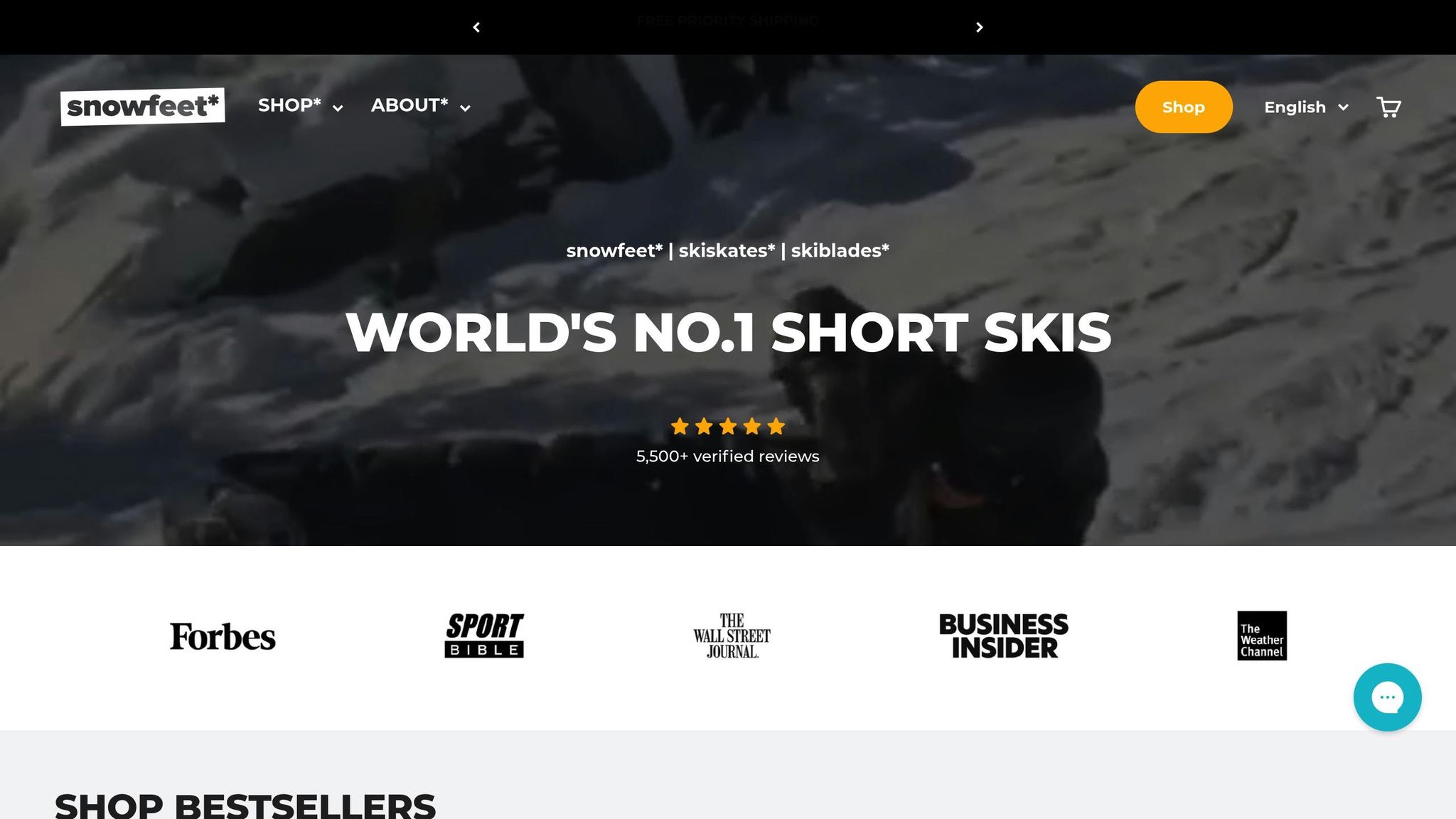
Die Wahl zwischen traditionellen langen Ski und Snowfeet* Short Skis kann dein Bergabenteuer entscheidend beeinflussen. Jeder hat seine eigenen Vorteile, daher hilft das Verständnis der Unterschiede, die beste Option für deinen Skistil und deine Bedürfnisse zu wählen.
Lange Ski von Rossignol, Atomic, Elan und Head
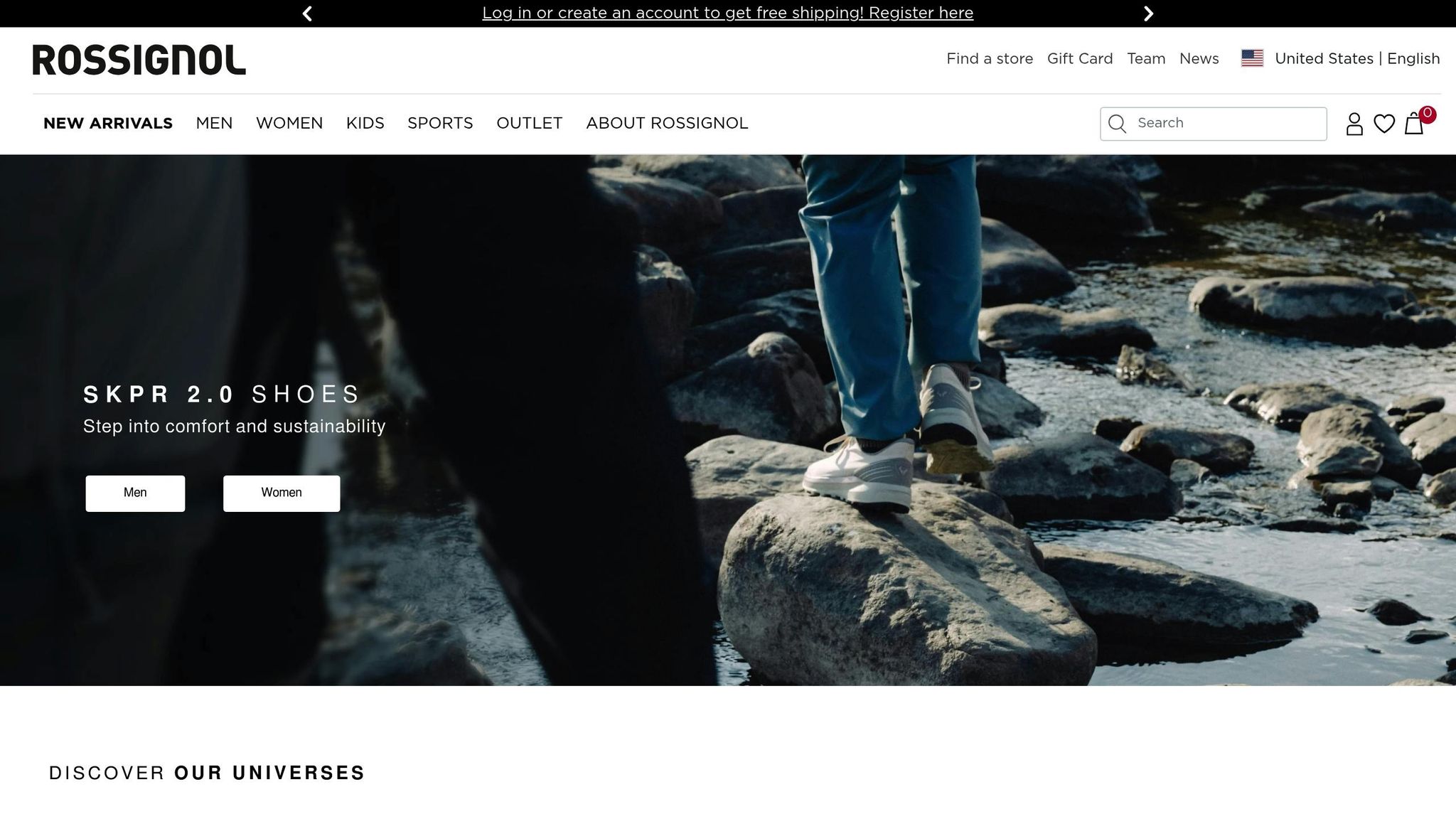
Lange Ski von bekannten Marken wie Rossignol, Atomic, Elan und Head sind die klassische Wahl für Skifahrer, die Geschwindigkeit und Stabilität suchen. Diese Ski messen meist über 67 Zoll (170 cm) und können sogar über 71 Zoll (180 cm) lang sein. Ihre Größe verschafft ihnen einen großen Vorteil beim schnellen Carven und beim Halten des Grips auf eisigem oder festgefahrenem Schnee. Außerdem hilft ihre größere Oberfläche, mühelos im Tiefschnee zu schweben – etwas, das fortgeschrittene Skifahrer lieben, wenn sie steile Hänge oder anspruchsvolles Backcountry-Gelände meistern.
Allerdings gibt es einen Haken. Lange Ski können sich in engen Bereichen, wie schmalen Wegen oder überfüllten Pisten, sperrig anfühlen. Außerdem haben sie eine steilere Lernkurve, was für Anfänger oder Fortgeschrittene, die schnelle Kurven meistern wollen, ermüdend sein kann. Nach ein paar Tagen auf der Piste kann die körperliche Anstrengung dich erschöpft zurücklassen.
Snowfeet* Short Skis und Skiskates
"Snowfeet* verfolgt einen völlig anderen Ansatz mit seiner kompakten, leichten Skiausrüstung. Ihr Sortiment umfasst Skiskates (17 Zoll oder 44 cm), Skiblades (65–120 cm) und Mini Ski Skates (38 cm). Die Mini Ski Skates, die nur 3,3 Pfund wiegen, sind so tragbar, dass du sie einfach in deinen Rucksack werfen kannst. Noch besser: Sie sind mit normalen Winterschuhen kompatibel – du musst nicht in teure, schwere Skischuhe investieren."
Für mehr Vielseitigkeit verfügen die Skiskates (44 cm) über einen robusten Holzkern und funktionieren sowohl mit Winterschuhen als auch mit Skischuhen. Die längeren Skiblades bieten hingegen ein traditionelleres Skierlebnis und sind dennoch wendig und leicht zu handhaben.
"Snowfeet sind extrem leicht und klein, sodass sie in jede Tasche passen und einfach zu transportieren sind. Du brauchst keine Skischuhe oder andere schwere und teure Ausrüstung." – Snowfeet Inc.
Snowfeet* Short Skis sind für Spaß auf allen Arten von Gelände konzipiert. Egal, ob du über präparierte Pisten gleitest, den Snowpark besuchst, Wanderwege erkundest oder sogar Langlauf ausprobierst – sie sind für dich da.
Direkter Vergleich: Langski vs. Snowfeet* Short Skis
So schneiden diese beiden Optionen bei den wichtigsten Merkmalen einer Skireise ab:
| Merkmal | Traditionelle Langski | Snowfeet* Short Skis |
|---|---|---|
| Länge | Über 170 cm (67 Zoll) | 15–47 Zoll (38–120 cm) |
| Gewicht | Schwer, sperrig | Ultraleicht (1,5 kg für Mini Ski Skiskates) |
| Manövrierfähigkeit | Herausfordernd in engen Bereichen | Schnelle und mühelose Kurven |
| Lernkurve | Schwierig für Anfänger | Einfach für alle Könnerstufen |
| Stiefelkompatibilität | Benötigt teure Skischuhe | Funktioniert mit normalen Winterstiefeln |
| Geländeanpassungsfähigkeit | Am besten für präparierte Abfahrten und anspruchsvolles Gelände | Ideal für Pisten, Parks und Trails |
| Tragbarkeit | Benötigt speziellen Transport | Passt in einen Rucksack |
| Geschwindigkeitsstabilität | Ausgezeichnet bei hohen Geschwindigkeiten | Ideal für Freizeittempo |
| Powder-Leistung | Hervorragend im Tiefschnee | Weniger effektiv im Tiefschnee |
Wenn du eine einwöchige Skireise planst und eine unkomplizierte, flexible Option suchst, könnten Snowfeet* Short Skis dein neuer bester Freund werden. Während lange Skier bei Stabilität und Geschwindigkeit punkten, machen ihr Volumen und ihre Komplexität sie weniger vielseitig. Snowfeet* Produkte hingegen sind leicht, einfach zu handhaben und an verschiedene Terrains anpassbar – eine spaßige und praktische Wahl für Skifahrer aller Levels.
Skier wählen nach Terrain und Können
Das Terrain, auf dem du fährst, und dein Können sollten deine Ausrüstungswahl bestimmen. Jedes Terrain stellt eigene Herausforderungen dar, und Snowfeet* Produkte zeichnen sich durch ihre Vielseitigkeit aus. Schauen wir uns an, wie sie auf Resort-Pisten, in Snowparks und auf Off-Piste-Strecken performen.
Resort-Pisten und präparierte Abfahrten
Die meisten Skifahrer verbringen ihre Zeit auf gut präparierten Pisten, und hier glänzen Snowfeet* Skiblades (erhältlich in 65, 99 und 120 cm) wirklich. Im Vergleich zu traditionellen Skiset-Angeboten von Marken wie Rossignol oder Atomic bietet Snowfeet* eine leichte und wendige Alternative, die zudem den Geldbeutel schont.
Für Anfänger kann das Navigieren von Kurven auf herkömmlichen Skiern ermüdend sein. Snowfeet* Skiblades erleichtern dank ihrer kürzeren Länge und des kleineren Kurvenradius das schnelle Richtungswechseln – perfekt, um Carving-Techniken zu erlernen.
Fortgeschrittene und erfahrene Skifahrer können die Modelle mit 99 cm und 120 cm genießen, die genug Kantengriff für solides Carving bieten und dabei verspielt und reaktionsfreudig bleiben. Während traditionelle Skier bei hohen Geschwindigkeiten Stabilität bieten, findet der Großteil des Skifahrens im Resort bei moderaten Geschwindigkeiten statt, wo Agilität und Spaß wichtiger sind. Snowfeet* Skiblades sind auch ideal, um durch überfüllte Pisten oder enge Baumreihen zu schlängeln und bieten eine sanfte, kontrollierte Fahrt. Jetzt wechseln wir zu kreativeren Umgebungen wie Snowparks und urbanen Gebieten.
Snowparks und urbane Gebiete
Snowparks und urbane Umgebungen verlangen Agilität, Kreativität und die Fähigkeit, Tricks zu landen – Bereiche, in denen lange, traditionelle Skier oft versagen. Hier kommen Snowfeet* Skiskates (44 cm) und Mini Ski Skates (38 cm) ins Spiel, die diese Orte in deinen persönlichen Spielplatz verwandeln.
Logan @xskyskaterx, ein professioneller Skater, bringt es am besten auf den Punkt:
"Ich kann alle meine Inline-Tricks damit reißen! Boxes, Sprünge und Spins sind alle frisch und neu, aber vertraut genug, um sie ohne zu viele Stürze zu lernen! Ehrlich gesagt ist das mein Schneesport. Ich kann mir wirklich nicht vorstellen, jemals wieder Skier anzufassen. Sie sind schnell und agil, praktisch und leicht und perfekt zum Shredden! 100% Empfehlung!"
Traditionelle Skier können mit diesem Maß an Agilität einfach nicht mithalten. Einen 360-Grad-Spin auf langen Skiern versuchen? Unbeholfen und riskant. Aber Snowfeet* Produkte sind für Tricks, rückwärts Fahren, Drehungen und Sprünge konzipiert und damit die erste Wahl für Park-Enthusiasten.
Eine weitere Nutzerin, Brina, hebt ihre Kompatibilität mit Snowboardstiefeln hervor, was sie für Terrain Parks noch attraktiver macht:
"Ich liebe es, dass die Mini Skis mit Snowboardstiefeln funktionieren! Ich hatte diesen Winter die beste Zeit damit. Ich fahre sie in den Terrain Parks und es ist wie Rollschuhlaufen im Skatepark, nur besser! Ich kann sie nur empfehlen."
Diese Stiefelkompatibilität macht es auch überflüssig, teure Skistiefel zu kaufen, was Snowfeet* Mini Ski Skates zu einer budgetfreundlichen Option für Parkfahrer macht.
Abseits der Piste und Wanderwege
Abseits der Piste stellt das Skifahren eigene Herausforderungen dar, und hier kommen die längeren Snowfeet* Skiblades (99 cm und 120 cm) ins Spiel. Ihre kürzere Länge macht sie ideal für enge, bewaldete Gebiete und schmale Wanderwege. Mit Längen von etwa 39 bis 47 Zoll bieten sie mehr Kontrolle als traditionelle lange Skier, die breitere Kurven erfordern.
Auch die Schneebedingungen spielen eine Rolle. Snowfeet*-Produkte funktionieren am besten auf festem Schnee statt auf tiefem Pulverschnee. Backcountry-Skier sind typischerweise breiter (70–100 mm), um auf weichem, tiefem Schnee zu schweben, aber Snowfeet* setzt auf Wendigkeit. Für gemischtes Gelände mit festem Schnee und eisigen Stellen bieten die Metallkanten der Snowfeet* Skiblades Haltbarkeit und Kontrolle. Außerdem reduziert ihr kompaktes Design die Ermüdung bei langen Touren und macht sie leicht verstaubar im Rucksack.
Wenn dein Ziel tiefer Pulverschnee im Backcountry ist, sind traditionelle breitere Skier vielleicht die bessere Wahl. Für präparierte Langlaufloipen, Wanderwege oder abwechslungsreiches Gelände bieten Snowfeet*-Produkte jedoch eine unvergleichliche Portabilität und Anpassungsfähigkeit, die traditionelle lange Skier einfach nicht bieten können.
sbb-itb-17ade95
Reisevorteile: Warum kompakte Skier Sinn machen
Snowfeet*-Produkte sind nicht nur auf der Piste vielseitig – sie sind auch ein Traum für Reisende. Wenn du eine einwöchige Skireise planst, kann das Herumschleppen sperriger Ausrüstung ein großes Ärgernis sein. Traditionelle Skier von Marken wie Rossignol, Atomic und Head sind lang und unhandlich und erfordern oft übergroße Skitaschen. Das macht sie nicht nur schwer zu handhaben in überfüllten Flughäfen oder Resorts, sondern kann auch zu zusätzlichen Gepäckgebühren führen.
Packen und Unterwegssein
Die meisten traditionellen Skier sind 63–71 Zoll lang, was das Packen zur Herausforderung macht. Snowfeet* hingegen sind mit Blick auf Portabilität konzipiert und messen nur 15–47 Zoll (38–120 cm). Ihre kompakte Größe bedeutet, dass sie problemlos in einen Standard-Rucksack passen – keine sperrigen, übergroßen Skitaschen mehr. Außerdem bietet Snowfeet* kostenlosen Versand in die meisten Länder mit Lieferung in nur 3–5 Werktagen. Dieses kompakte Design macht das Reisen nicht nur einfacher, sondern vereinfacht auch die Wahl der Stiefel.
Stiefelkompatibilität
Hier wird es noch besser. Traditionelle Skier erfordern schwere, spezialisierte Stiefel, die sich wie eine Last anfühlen können. Snowfeet*? Sie sind mit allen Winter- oder Snowboardstiefeln kompatibel. Influencer Jakub F bringt es perfekt auf den Punkt:
"Mit diesen kleinen Skiern fühlt man sich viel agiler, schneller und vor allem – komfortabel. Keine Schnallen, keine schweren Stiefel – einfach anschnallen und losfahren."
Snowfeet* bietet eine breite Größenauswahl von US 6 bis 13 (EU 38 bis 47). Für kleinere Füße gibt es die Mini-Version, die EU-Größen 27–38 passt. Wenn Sie eher klein sind, empfehlen sie Snowboardboots für die beste Passform.
Reisevergleich: Snowfeet* vs. traditionelle Skier
Lassen Sie es uns aufschlüsseln. Wenn es ums Reisen geht, überstrahlen Snowfeet* traditionelle Skier komplett.
| Aspekt | Traditionelle Skier (Rossignol/Atomic/Head) | Snowfeet* |
|---|---|---|
| Länge | 63–71 Zoll (160–180 cm) | 15–47 Zoll (38–120 cm) |
| Gewicht | 20–25 lbs insgesamt | 3–6 lbs insgesamt |
| Verpackung | Benötigt große Skitasche | Passt in einen Standard-Rucksack |
| Schuhanforderungen | Spezialisierte Skischuhe | Jede Winter- oder Snowboardboots |
| Gehkomfort | Begrenzte Mobilität | Bequeme Schuhe |
| Stauraum | Erheblicher Platzbedarf | Leicht überall zu verstauen |
Traditionelle Ausrüstungen können bis zu 11 kg wiegen, während Snowfeet* nur 1,4–2,7 kg wiegen. Das ist ein großer Unterschied, wenn du Flughäfen navigierst oder zu den Pisten gehst. Du kannst sie sogar auf eine Schneeschuhwanderung mitnehmen oder im Hotelzimmer verstauen, ohne dir Sorgen um Platz zu machen.
Und sprechen wir über die Kosten. Skireisen für eine Familie können zwischen 2.500 und 15.000 $ liegen, wobei allein die Liftkarten etwa 289 $ pro Person kosten. Snowfeet*, die zwischen 150 und 699 $ liegen, bieten eine budgetfreundliche Alternative, ohne auf Spaß oder Komfort zu verzichten. Für Reisende, die Geld sparen und den Aufwand vermeiden wollen, sind Snowfeet* eine clevere Wahl.
Warum Snowfeet* am besten für vielseitiges Skifahren geeignet sind
Wenn du dich auf eine einwöchige Skireise vorbereitest, willst du Ausrüstung, die mit jedem Teil deines Abenteuers mithält – ohne das Volumen und die Einschränkungen traditioneller Skier. Snowfeet* bietet einen frischen Ansatz für Skiausrüstung, mit Fokus auf Flexibilität, Spaß und Bequemlichkeit. Das Ergebnis? Weniger Aufwand, mehr Zeit, die Pisten zu genießen.
Ein neuer Dreh in Sachen Ski-Vielseitigkeit
Traditionelle Skier, die oft 160–180 cm lang sind, sind für Geschwindigkeit und Stabilität gebaut. Aber sie können sich wie eine Last anfühlen, wenn man enge Stellen navigiert oder schnelle Kurven fährt. Snowfeet* dreht den Spieß um mit kürzeren Skiern von 15 bis 47 Zoll. Diese kompakten Skier sind leichter, einfacher zu manövrieren und für scharfe Kurven ausgelegt, ohne dich zu ermüden. Skier unter 160 cm haben weniger Oberfläche, was sie reaktionsschneller und perfekt für kurvige Abfahrten macht. Außerdem ermöglicht ihr leichtes Design ein einfaches Stoppen und Drehen.
Entwickelt für Abenteuer in allen Bereichen
Snowfeet* Produkte glänzen dort, wo traditionelle Skier oft versagen, und passen sich einer Vielzahl von Geländearten an. Ihre kürzere Länge macht sie ideal für schnelle Kurven, Tricks und Sprünge – besonders in Terrainparks oder auf Buckelpisten. Sie bewältigen alles von präparierten Pisten bis zu Pulverschnee, und ihr leichteres Design macht Aufstiege und Erkundungen im gemischten Gelände zum Kinderspiel.
So schlägt sich Snowfeet* im Vergleich zu traditionellen Skiern:
| Merkmal | Traditionelle Skier (Rossignol/Atomic/Head) | Snowfeet* Produkte |
|---|---|---|
| Trick-Fähigkeit | Begrenzte Freestyle-Optionen | Gebaut für Sprünge, Drehungen und Rückwärtsfahren |
| Effizienz bergauf | Sperrig und unhandlich | Leicht und perfekt zum Wandern |
| Multi-Terrain-Einsatz | Für spezielle Bedingungen geeignet | Wechselt mühelos zwischen Parks, Pisten und Trails |
| Energieeinsparung | Schwer und ermüdend | Leicht, reduziert Ermüdung |
Kurze Ski bieten bessere Kontrolle, mehr Stabilität und höhere Reaktionsfähigkeit beim Freizeitskilauf. Außerdem sind sie weniger ermüdend, sodass du länger fahren kannst, ohne dich ausgelaugt zu fühlen. Snowfeet* Produkte verbinden Tragbarkeit und Leistung und sind die erste Wahl für Skifahrer, die Neues entdecken, Spaß haben und alte Ausrüstung hinter sich lassen wollen.
Fazit: Hol das Beste aus deiner Skireise mit Snowfeet* heraus
Deine einwöchige Skireise verdient Ausrüstung, die zu deiner Energie passt und sich jeder Kurve, Wendung und jedem Terrain anpasst. Während traditionelle Marken wie Rossignol, Atomic und Head auf längere, schwerere Ski setzen, verfolgt Snowfeet* einen frischen Ansatz – mit Fokus auf Tragbarkeit und Vielseitigkeit für moderne Skifahrer.
Snowfeet* bietet Optionen wie den kompakten 44 cm Skiskate (ca. 17 Zoll, ab 390 $) und den 120 cm Short Ski (ca. 47 Zoll, Preis 690 $). Diese sind viel kürzer als traditionelle Ski und perfekt für Abenteuer auf verschiedenen Terrains. Ob du auf präparierten Pisten carvest, Terrainparks besuchst oder abseits der Piste unterwegs bist – Snowfeet* sorgt für Leichtigkeit und unkomplizierten Spaß.
Aus robustem, aber leichtem Kunststoff gefertigt, sind Snowfeet* Skier für Leistung auf verschiedenen Untergründen konzipiert. Sie sind so kompakt, dass du sie in einem Rucksack verstauen kannst – und sie funktionieren mit deinen normalen Winterstiefeln. Keine sperrige Spezialausrüstung nötig.
Egal, ob du gerade erst anfängst und schnell Fortschritte machst oder ein erfahrener Skifahrer bist, der etwas Neues sucht – Snowfeet* bietet dir Kontrolle, Leichtigkeit und Spaß bei jeder Abfahrt. Wenn du Ausrüstung willst, die mit deinem abenteuerlustigen Geist mithält, ist Snowfeet* die richtige Wahl.
FAQs
Warum sollte ich Snowfeet short skis statt traditioneller langer Ski für eine einwöchige Skireise wählen?
Snowfeet short skis bieten viel, besonders wenn du dich auf eine einwöchige Skireise vorbereitest. Erstens sind sie superleicht und kompakt, was bedeutet, dass du keine schweren, sperrigen Ausrüstungen mehr schleppen musst. Diese kleinen Dinger passen sogar in deinen Rucksack – ja, kein Extra-Gepäck oder der Ärger mit übergroßen Skitaschen.
Noch ein großer Vorteil? Ihre Manövrierfähigkeit. Snowfeet short skis sind super einfach zu kontrollieren, besonders in engen Bereichen wie Buckelpisten oder Terrainparks. Das macht sie zur perfekten Wahl für Anfänger oder alle, die ein entspannteres Skierlebnis suchen. Und hier kommt das Sahnehäubchen: Sie sind vielseitig. Du kannst sie mit deinen normalen Winterstiefeln oder Snowboardboots verwenden, also brauchst du keine teuren Spezialschuhe. Und oft sind sie auch günstiger als traditionelle Ski, sodass du den ganzen Spaß hast, ohne dein Budget zu sprengen.
Aber das wahre Highlight der Snowfeet skis? Sie bieten ein ganz anderes Feeling. Stell es dir vor wie eine Mischung aus Skifahren und Skaten – auf Schnee. Egal, ob du Anfänger bist oder einfach nur Abwechslung auf der Piste suchst, diese short skis bieten eine frische, spaßige Wendung, die schwer zu übertreffen ist!
Wie schneiden Snowfeet short skis im Vergleich zu traditionellen Skiern auf verschiedenen Geländen ab?
Snowfeet short skis, ähnlich wie Skiblades und Skiskates, sind für alle Arten von Gelände gemacht. Mit Längen von 44 cm bis 120 cm sind sie kompakt, leicht und super einfach zu handhaben. Das macht sie zum Vergnügen auf präparierten Pisten, im Terrainpark und sogar bei leichtem Pulverschnee. Ihre kleine Größe ermöglicht schnelle, knackige Kurven und eine verspielte Stimmung auf der Piste. Sie sind eine tolle Wahl für Anfänger oder Freizeit-Skifahrer, die etwas Einfaches und Spaßiges wollen, ohne sich um komplexe Techniken sorgen zu müssen.
Andererseits sind traditionelle Skier – meist 150 cm oder länger – für Geschwindigkeit, Stabilität und steile Hänge oder tiefen Pulverschnee gebaut. Aber seien wir ehrlich, sie können etwas sperrig wirken, erfordern mehr Aufwand zur Kontrolle und haben eine steilere Lernkurve. Hier kommen Snowfeet short skis als benutzerfreundliche Alternative ins Spiel. Sie sind leicht zu tragen, einfach zu benutzen und perfekt für alle, die die Piste genießen wollen, ohne sperrige Ausrüstung zu schleppen. Wenn Spaß und Tragbarkeit deine Prioritäten sind, könnten sie deine neue Lieblingsart zu Skifahren sein.
Sind Snowfeet short skis eine gute Option für erfahrene Skifahrer, die an traditionelle lange Skier gewöhnt sind?
Snowfeet short skis, wie Skiblades und Skiskates, sind eine großartige Option für erfahrene Skifahrer, die etwas Neues ausprobieren wollen. Dank ihres kompakten Designs bieten sie unglaubliche Wendigkeit und Kontrolle, was sie zum Spaß für schnelle Kurven, enge Passagen und verschiedene Geländearten macht. Viele fortgeschrittene Skifahrer genießen die Herausforderung, da sie helfen, Balance und Kantengriff zu verfeinern und eine ganz neue Ebene der Skifähigkeiten hinzufügen.
Während traditionelle lange Skier deine erste Wahl für Geschwindigkeit, Carving und das Schweben durch tiefen Pulverschnee sind, bringen Snowfeet short skis etwas anderes mit. Sie sind leicht, super tragbar und unglaublich einfach zu transportieren. Außerdem bieten sie ein verspieltes und dynamisches Erlebnis auf der Piste, perfekt für alle, die Abwechslung suchen, ohne auf Leistung zu verzichten.





















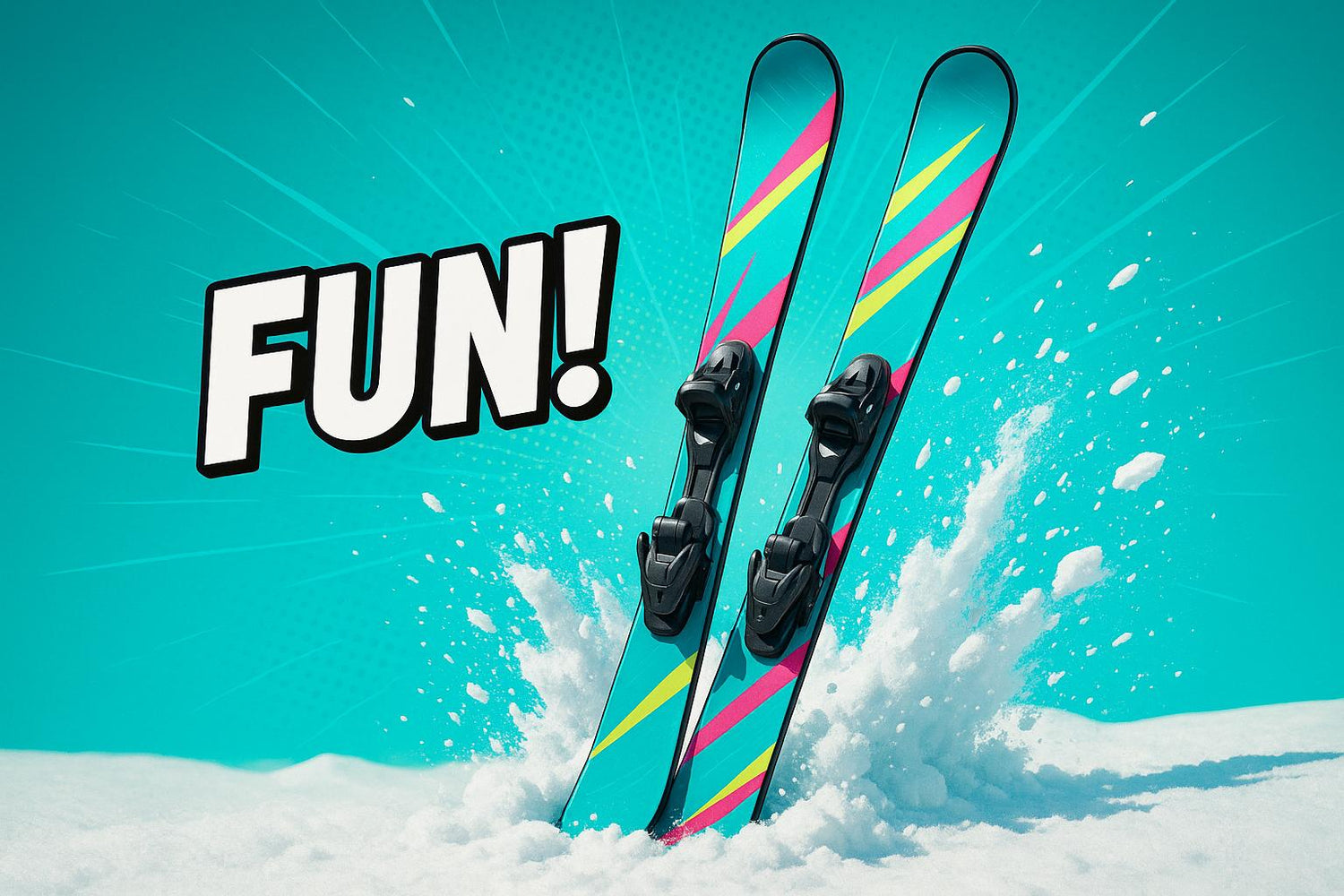
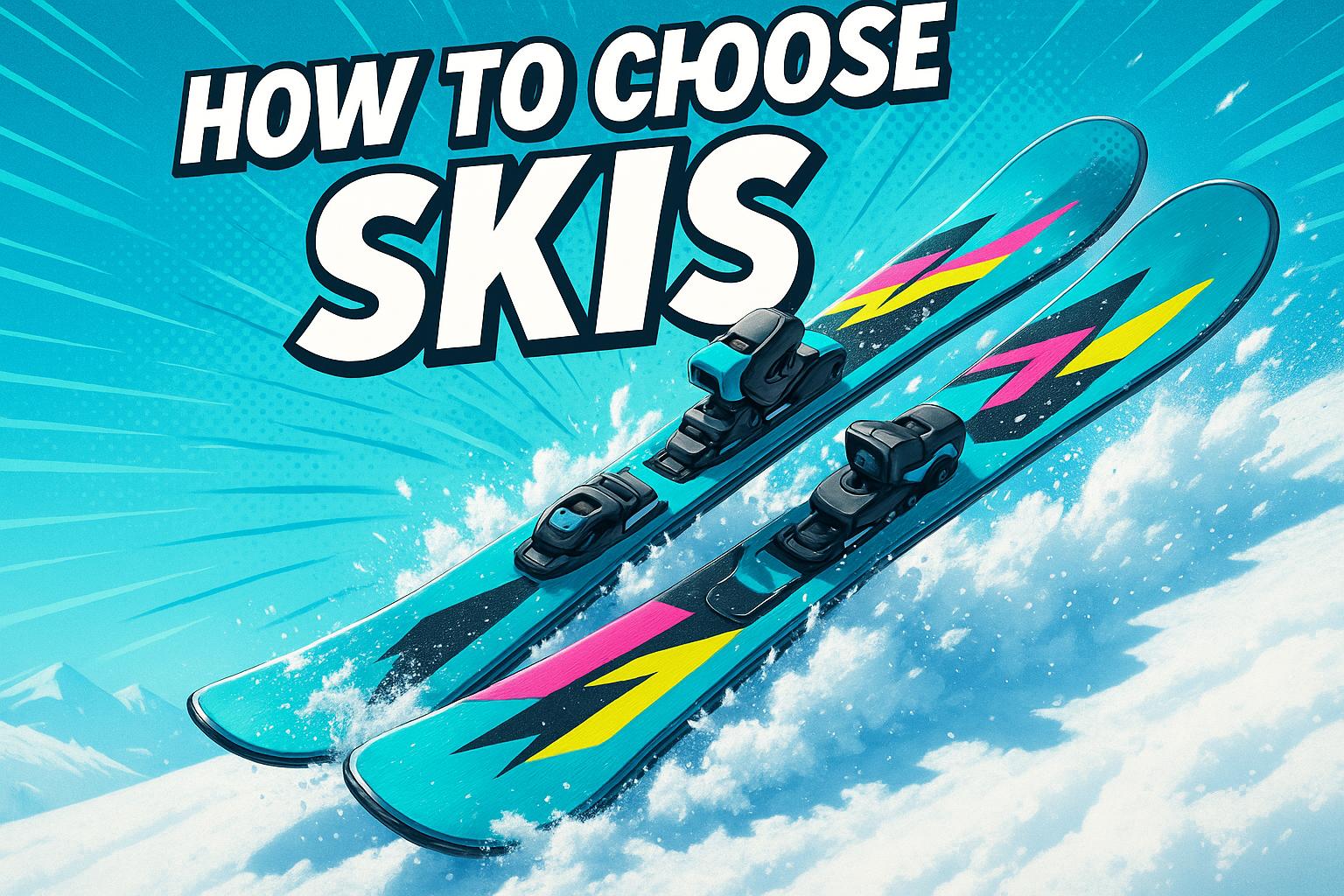
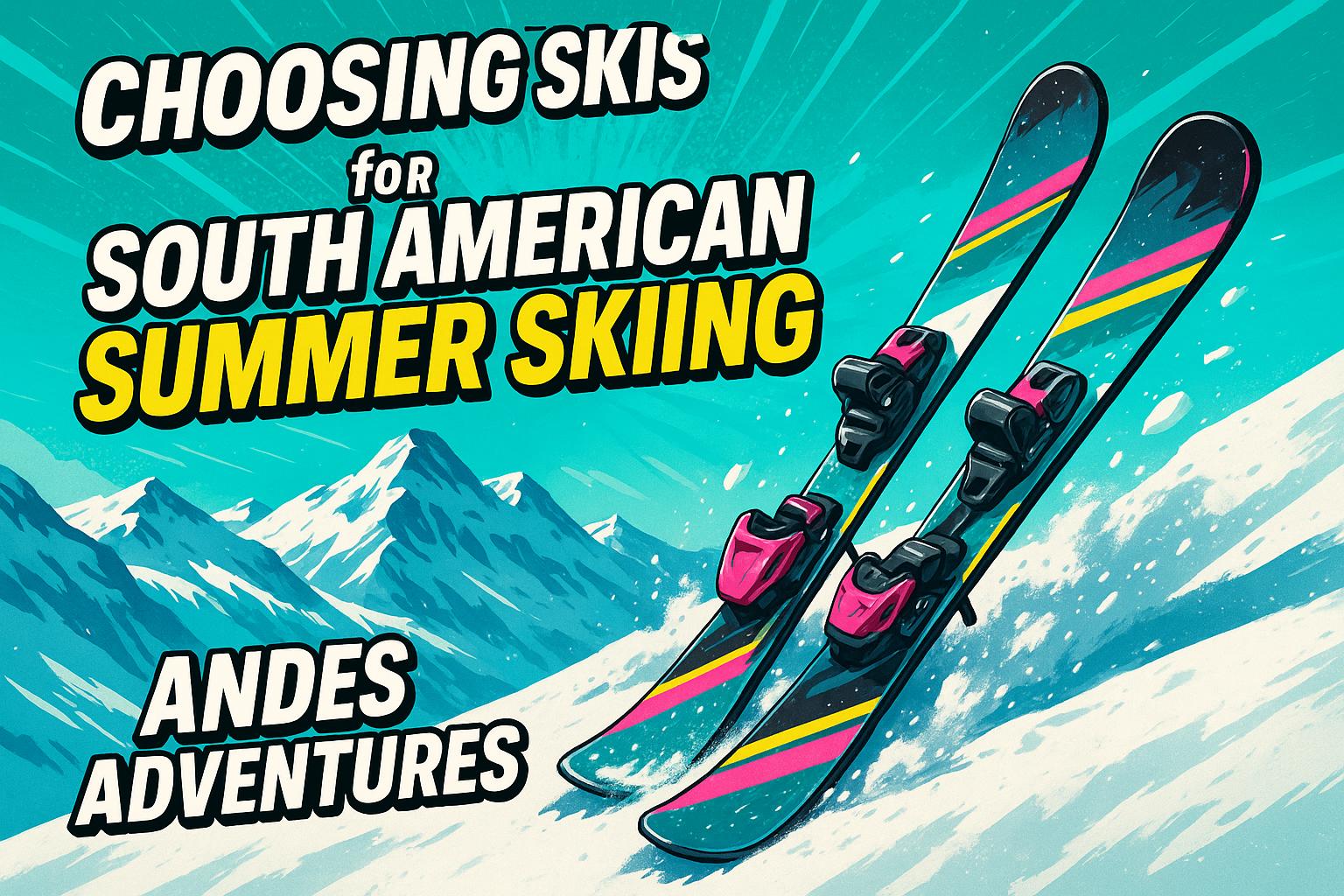










Hinterlassen Sie einen Kommentar
Diese Website ist durch hCaptcha geschützt und es gelten die allgemeinen Geschäftsbedingungen und Datenschutzbestimmungen von hCaptcha.